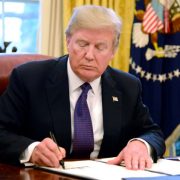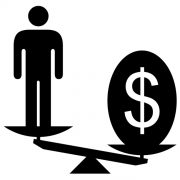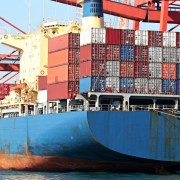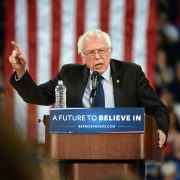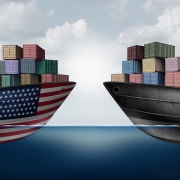Though the current economy is among the strongest of the past 50 years, critics of President Trump’s transformational trade policies continue to insist that the tariffs are hindering rather than helping the boom. Citing forecasts like the latest from the Federal Open Market Committee, these critics have tarred the Trump tariffs as price inflators, job killers and growth destroyers. Yet with each new tariff—on dishwashers, solar panels, aluminum, steel and more than $300 billion of Chinese imports—the economy remains robust, wages continue to rise, and inflation stays muted.
Why have the gloom-and-doom forecasters been so wrong? The errors come from flaws in traditional economic models. Using a better set of assumptions to assess the economy can explain why tariffs have spurred growth, not hampered it.
Anti-tariff analysts typically rely on static “partial equilibrium” models that predict how short-run price hikes from tariffs might ripple through a small number of product markets. While a tariff on steel might boost employment in that industry, for example, the price of steel would rise for car makers downstream, which would then suffer lower production and fewer jobs. Each tariff shrinks total employment, depresses wages, and increases inflation—or at least that’s how these forecasts typically go.
Yet these effects are scarcely found in aggregate macroeconomic statistics. The economy has added more than seven million jobs during the Trump presidency, and more than 2.4 million Americans have risen out of poverty. The unemployment rate is as low as it has been in a half-century, and the rates for African-Americans and Hispanics are lower than ever. Median household income hit a record $66,000 last year, and income inequality dropped sharply as the lowest earners got the largest proportional gains. More than two million prime-age workers have returned to the labor force.
This jarring disconnect between the forecasts and the real Trump economy would be comical if the policy stakes weren’t so high. What is sorely missing from these forecasts is a “general equilibrium” analysis of tariffs, which would assess the whole economy, with a concomitant “dynamic scoring” of their effects, to account for the new investment tariffs induce.
Take the steel industry. U.S. Steel is spending more than $2 billion to upgrade its plants, such as its Gary Works in Indiana and Mon Valley Works in Pennsylvania. Nucor Corp. has committed billions to facilities from Frostproof, Fla., and Sedalia, Mo., to Marion, Ohio, and Brandenburg, Ky.
Over time this tariff-induced investment, along with lower taxes and sensible deregulation, will boost growth and job creation. Higher domestic production will also help offset any price hikes from the tariffs—steel is cheaper now than when the current tariff was imposed.
Here’s an equally important consideration, this one regarding strategy: President Trump’s imposition of actual tariffs has made the threat of tariffs more credible, and a variety of Trump tariff threats have borne robust results. These include the successful renegotiation of two of the worst trade deals in U.S. history, the North American Free Trade Agreement and the deal struck with South Korea in 2007. The administration also forged a new pact with Japan that will boost American electronics along with farmers and ranchers.
The president’s threat of auto tariffs has likewise drawn billions of dollars of new foreign direct investment from the likes of Toyota, Volkswagen and Mercedes-Benz, and at home, Fiat Chrysler, Ford and General Motors are also spending on new facilities. Combined with job repatriation from the U.S.-Mexico-Canada Agreement, these investments will boost the fortunes of American auto workers for decades to come.
In addition to missing the upside of supporting American industries, critics overlook the ways the U.S. has suffered under open trade. Research by economists like MIT’s David Autor has illustrated the socioeconomic harm caused by expanded trade with China in the 2000s, which contributed to the loss of tens of thousands of American factories and millions of manufacturing jobs and the hollowing out of many Midwest and Southern communities. What followed was an associated rise in the rates of divorce, drug addiction, crime, depression and death, particularly among blue-collar men no longer able to support their families at a decent wage.
The national-security externalities associated with Trump trade policy may be even more consequential. A case in point is the tariffs being used as leverage to defend America’s technological crown jewels from being forcibly transferred to Chinese companies—from artificial intelligence, robotics and autonomous vehicles to quantum computing and blockchain. These industries comprise the core of the next generation of weapons systems needed to repel threats from rivals like China, Russia and Iran. One must ask the anti-tariff forecasters: Where are the benefits of a freer and more secure American homeland counted in your models?
An honest, modern analysis of the Trump tariffs would acknowledge the widespread market distortions that currently disadvantage American workers, parse the complex ways tariffs affect trade partners’ behavior, appropriately discount short-term price impacts, dynamically score the many long-term positive effects, and parse the complex ways tariffs affect trade partners’ behavior.
Americans should welcome this analysis warmly—especially in the heartland, where the ugly predictions of the anti-tariff forecasters seem so out of touch with the beautiful realities of the Trump economy.
Mr. Navarro is assistant to the president for trade and manufacturing policy. This article first appeared at wsj.com.
